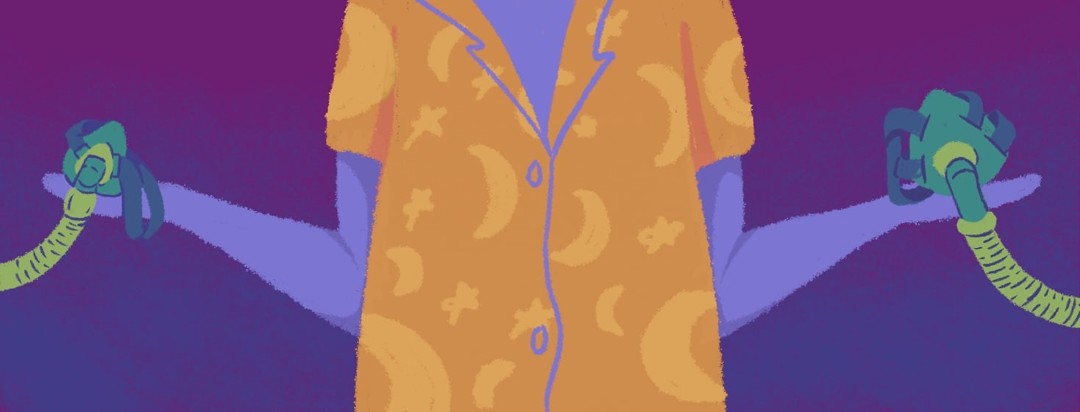The Sleep Machine
I was recently diagnosed with severe obstructive sleep apnea after having a sleep study test. This condition means that my airway closes while I am sleeping, which causes me to choke or not breathe during sleep and can damage the heart over the long-term.
Sleep apnea can also severely hamper quality of sleep, contributing to increased tiredness during the day and general feeling of fatigue. While I have struggled for many years with fatigue, I always attributed it to my rheumatoid arthritis. It seems that there was a second culprit as well!
Using an AutoPAP for sleep apnea
Admittedly, I was neither excited about having another condition added to my plate nor the current common treatment of using a CPAP machine while sleeping. I was convinced by the severity of my condition and the negative health effects that I should give the “sleep machine” (as I call it) a try.
AutoPAP vs traditional CPAP
Following the sleep study, the physician prescribed me an AutoPAP machine. This is different than the traditional CPAP, which is sending continuous airflow through a mask to make sure that your airways stay open. The Auto-PAP is a machine that ramps up the air gradually, senses when your breathing stops or gets too shallow, and then increases the airflow to open the airway. It is supposed to adjust to the individual’s condition and treatment needs, where a CPAP needs to be set in a sleep lab and checked to make sure it is delivering the right amount of air during sleep.
My experience using an Auto-PAP machine
After a couple weeks I received my machine via mail delivery. It came with a nose piece that had different sizes, hose, and machine with a humidifier. It also came with a lot of direction booklets! At first, I was really overwhelmed, but my husband patiently put it together (after soaking and drying the components), helped me pick the right nose piece size, and set it up.
The first night was really difficult because it felt uncomfortable in multiple ways: it felt claustrophobic around my face, too tight on my nose, and also like I couldn’t breathe because the air pressure was so strong. I kept trying it for a week and gradually became more accustomed to the feel of the mask. Sometimes I just had to take it off in the middle of the night because I couldn’t fall asleep or kept waking up feeling uncomfortable.
Helpful tools and information
Thankfully part of the process was a follow-up call with the sleep machine equipment provider to talk through my experience and see what adjustments could be made. The night before my scheduled call, I noticed a sticker on the machine that said I could download an app on my phone and get data on my sleep. For me, this sounded very helpful. The app would tell me the length of time wearing the mask, the level of air leakage from the mask, the number of sleep apnea incidents on average per hour, and if I took my mask on/off multiple times. Then an overall score of this information could tell me how it was going.
Making adjustments that work for me
On the call with the equipment provider, I explained how I was feeling uncomfortable with the nose mask. Once I put it on, speaking became difficult because opening my mouth altered the air pressure coming in through my nose. Additionally, I tend to breathe through my mouth some when sleeping. Whenever my mouth opened during sleep I would wake up with an air blast coming at my nose through the mask. It even woke my husband on multiple occasions!
Assistance from the sleep equipment provider
The provider suggested I try a full face mask that would cover both my mouth and nose. It arrived a few days later and I have been using it ever since. It is much more comfortable for my night time breathing and surprisingly feels less claustrophobic to me than the one strapped to my nose (which I think just gripped too tightly and near my eyes to be comfortable). With this change, my sleep phone app results also improved, as I haven’t had to remove the mask during the night and could keep it on longer.
Although I know I’ve just begun the journey, I am hopeful that the sleep machine is improving the quality of my sleep. I believe my fatigue may be getting better, although it can take a few months for that to be truly revealed. In any case, I’m going to continue working with it towards the goal of improving my health for the long term.
Community Poll
What flare symptom do you wish you could avoid the most?

Join the conversation